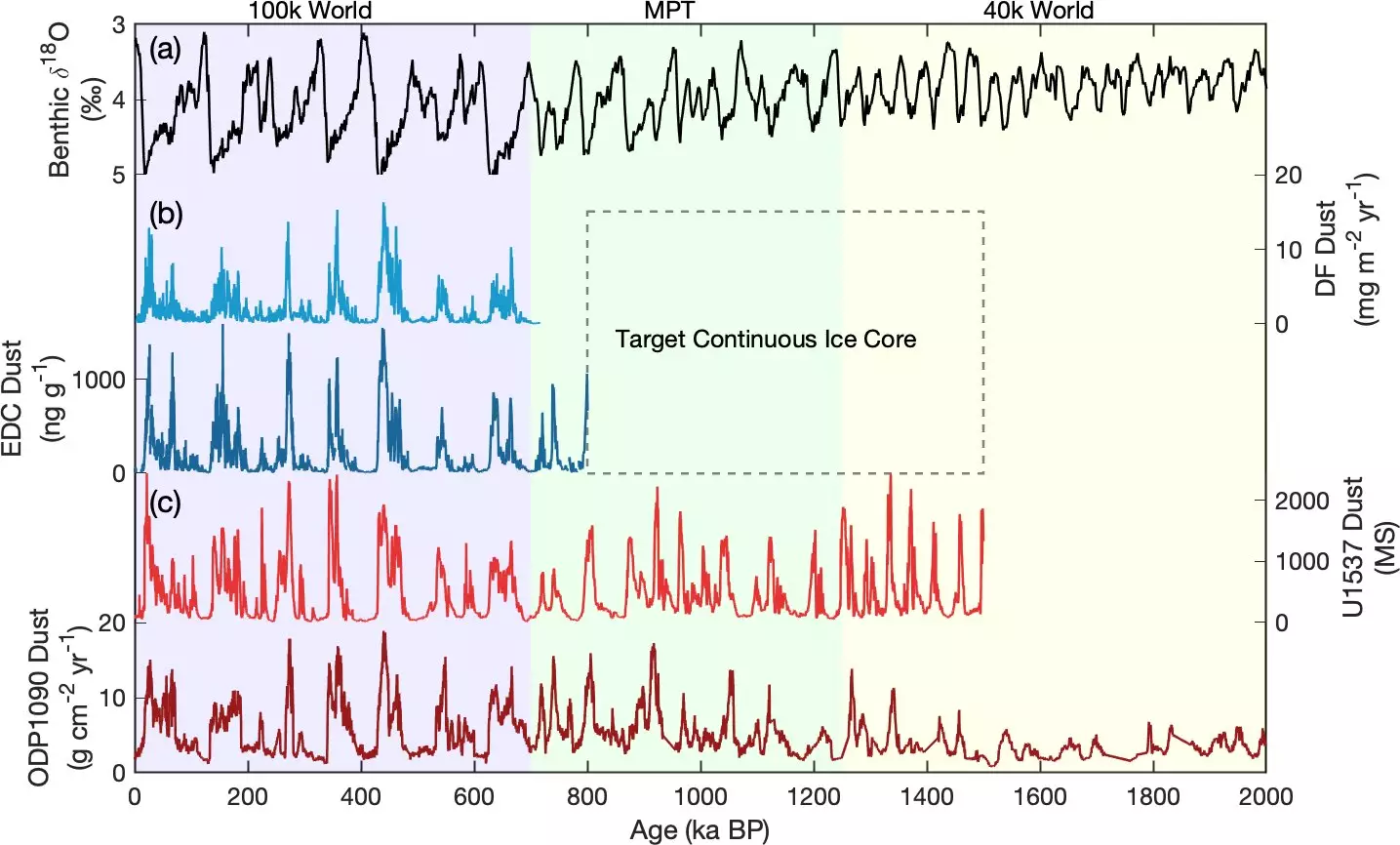The Earth’s climate has undergone dramatic transformations across its extensive timeline of approximately four and a half billion years. Among the most striking features of this climate history are the glacial periods, when vast ice sheets blanketed significant portions of the planet. This ice not only reflects a chillingly beautiful past but also serves as a crucial archive for scientists seeking to understand how Earth’s climate has changed over time. Ice cores, in particular, are a vital resource for climate researchers, as they encapsulate not just the temperature but also atmospheric composition, dust levels, and even gases like carbon dioxide and methane from eras long gone.
Ice cores provide insight into historical climate conditions with incredible detail. When these samples are extracted from glaciers, they reveal layers that correspond to specific historical periods, allowing scientists to decode the climate narrative woven through each layer. The relationship between dust particles trapped in the ice and glacial periods is especially telling; increased dust accumulation often indicates drier, windier conditions associated with glacial timeframes. These changes can occur due to factors such as the exposure of continental shelves, a decrease in precipitation, and geographical transformations that facilitate more windborne dust transport.
One of the most valuable sites for understanding these ancient conditions is the Epica Dome C in Antarctica, which boasts the oldest known continuous ice record extending back 800,000 years. However, the ambitious quest to explore even older ice has been undertaken by an international coalition of scientists, who aim to extend our understanding back to 1.5 million years. This extended time frame is essential for studying climate cycles that oscillated between glacial and interglacial states every 41,000 years before roughly 1.2 million years ago, transforming to an irregular pattern, and shifting again to cycles of approximately 100,000 years.
However, the extraction of such ancient ice is fraught with challenges. The movement of glaciers can disrupt the ice layers, complicating the coherent stratigraphy required for accurate historical readings. Additionally, the natural process of basal melting, occurring at the glacier’s base, can obliterate important records. Consequently, extensive reconnaissance efforts are vital for pinpointing suitable drilling sites that promise the best-preserved cores.
Once these sites are identified, quick recovery methods are employed to access the deeper layers of ice. One innovative technique involves the melting of upper ice layers to reach the basal ice faster. Researchers utilize optical logging, a method that measures the backscattered light from a laser lowered into the ice core, to assess dust content and identify the oldest ice strata.
Recent research published in Climate of the Past has illuminated the significance of marine dust in understanding the age of ice cores. The study, led by Dr. Jessica Ng of the Scripps Institution of Oceanography, posits that the International Ocean Discovery Program Site U1537 can serve as a promising candidate for dating some of the oldest ice based on the marine dust content it contains. By comparing the dust profiles from surrounding regions—such as southern Atlantic Ocean cores from the Ocean Drilling Project Site 1090—the researchers were able to establish correlations in the geological records that could enhance our understanding of dust provenance from South America, Australia, and New Zealand.
Dr. Ng and her team crafted simulated older ice records to juxtapose them with the marine dust patterns from Site U1537, manually adjusting the records to assess their correlation accuracy. Their findings suggested that while correlations were strong up to 800,000 years ago, discrepancies beyond this point could hint at variability in dust influx across the southern hemisphere during historical climate scenarios.
Understanding these geological rhythms is vital for revealing the drivers of critical climate transitions, such as the mid-Pleistocene transition. Previous studies have proposed that processes such as eroding regolith, allowing for the formation of thicker ice sheets, and tectonic activity leading to cooling glacial periods might contribute to these shifts. Yet, Dr. Ng’s research underscores the need for further investigation to fully determine a causal framework for these transitions.
The implications of this research are profound. By deciphering the climate cycles that occurred over tens of thousands to hundreds of thousands of years, scientists can better understand the feedback mechanisms that govern Earth’s climate system. Such insights are crucial as we navigate our current climate crisis, providing both lessons from the past and frameworks for predicting future patterns. Ultimately, the pursuit of the Oldest Ice is not merely an academic endeavor; it is a crucial aspect of understanding our planet’s climatic future.

